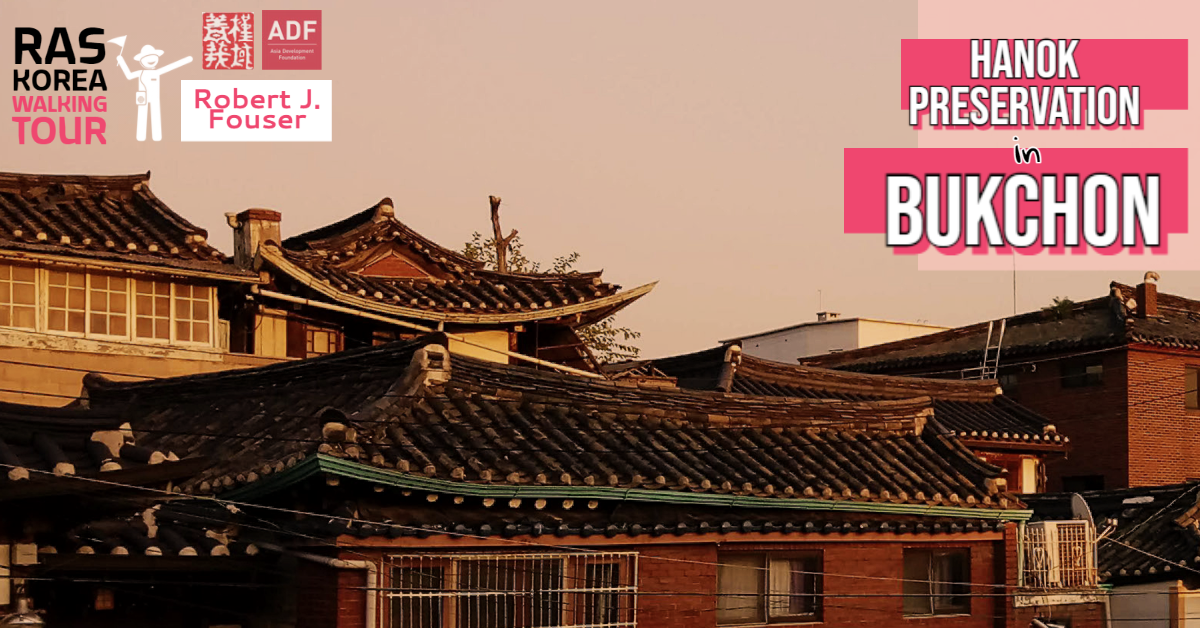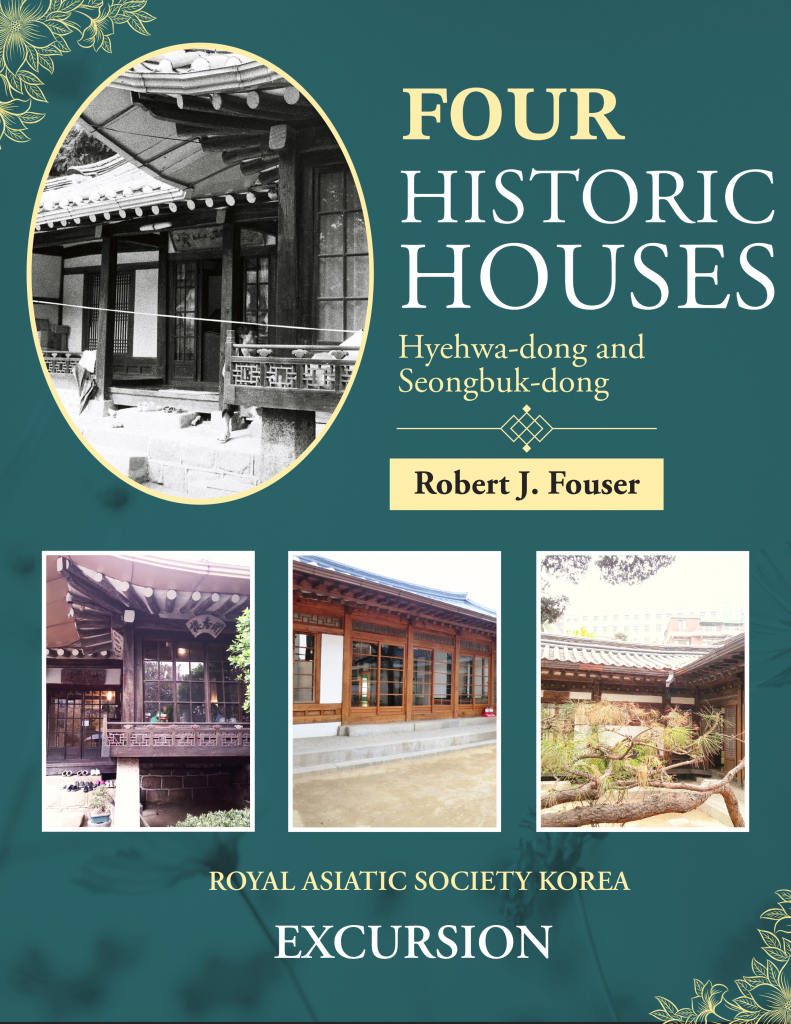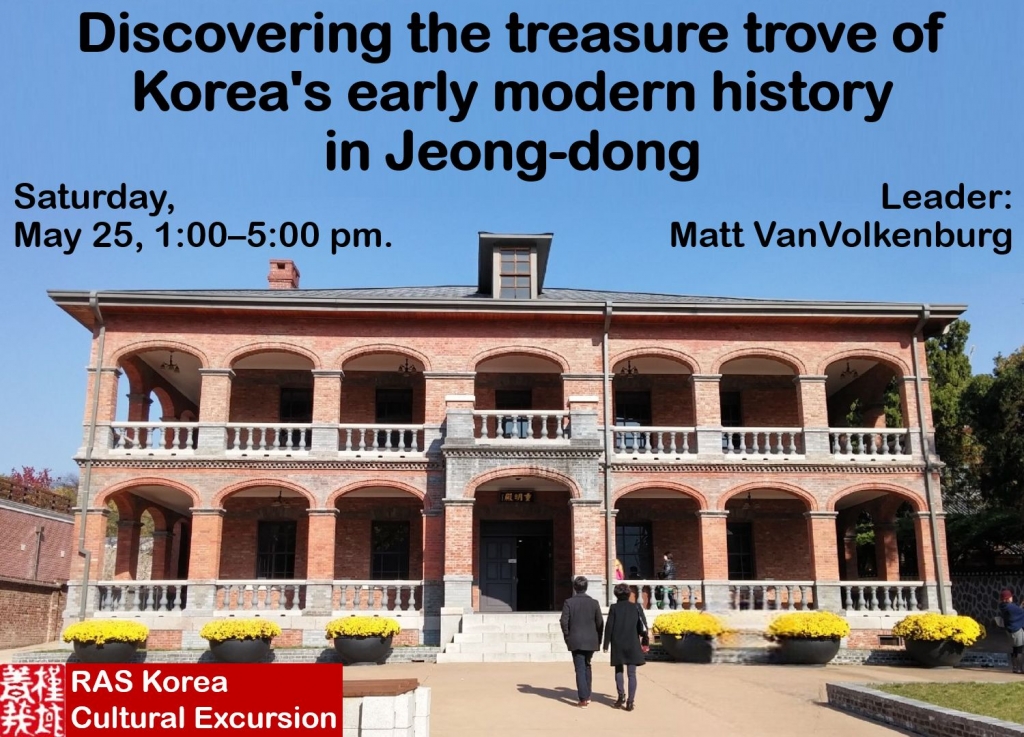

[Cultural Excursion] A Deep Dive into the History of Hanok Preservation in Bukchon
June 3, 2023 @ 1:00 pm - 5:00 pm KST
A Deep Dive into the History of Hanok Preservation in Bukchon
LEADER: Robert J. Fouser
DATE: Saturday, June 3, 2023. 1:00PM to 5:00PM
DESTINATION: Bukchon area
COST: 30,000 won for members; 40,000 won for non-members
MEETING POINT: Meet at the top of Exit 3 of Anguk Station (안국역, Line 3). At 01:00PM.
REGISTRATION:
RSVP by June 1 (Thursday) by clicking HERE with payment of the fee via bank transfer. Please register one RSVP at a time.
☞Payment to be remitted to the following account:
SHINHAN BANK ACCOUNT # 100-026-383501 (RAS-KB)
*Reservation is not confirmed until payment has been received by RAS Korea in advance of the event.
DESCRIPTION:
The rows of hanoks, or traditional Korean-style houses, in Bukchon have become one of the most common images of Seoul. On this excursion, we will take a deep look into the development and preservation of hanoks over the past 100 years, which can be divided into three periods. The first is the spread of “hanok developments” in the 1930s and the influx of new upper-class residents. The second is the period of social change and development pressures on the neighborhood from the 1970s to the 1990s. The third is the period of preservation and challenges of creeping commercialization that began in the early 2000s and continues to the present.
To gain a better understanding of the controversies over hanok preservation Bukchon that arose in the 2010s, we will focus on the planning for and implementation of preservation policies. In the 1980s, the city of Seoul imposed heavy regulations that prevented owners from making changes to the hanoks, but they were deeply unpopular among homeowners. In the late 1990s, the city of Seoul adopted a policy of offering hanok owners financial incentives to remodel their houses in accordance with architectural guidelines. The guidelines developed came to dominated other hanok renovation efforts, giving rise to a “Bukchon Style.” We will look closely at renovated hanoks to see how these guidelines have affected design and, for comparison, we will look at the few hanoks that remain close to their original 1930s condition.
The excursion will begin at Anguk Station, and we will make our way to Gye-dong, which is noted for smaller hanoks and a neighborhood commercial street. From there, we will go to Gahoe-dong, which is famous for its large hanoks and sweeping views of Seoul. Next, we will go to Samcheong-dong, which experienced rapid commercialization in the 2000s, but has many smaller hanoks behind the main street. The final leg of our walk will take us through the Anguk-dong area, which, though less residential, has a variety of interesting hanoks. We will visit a number of hanoks that are open to the public, such as house museums and businesses, as well as several private residences and offices.
We will meet at the top of Exit 3 of Anguk Station (Lines 3) at 1:00 p.m. The excursion will end back at Anguk Station around 5:00, but participants may join me afterwards for a coffee or a meal (not included in the excursion fee). Comfortable walking shoes that are easy to take off are recommended.
** As our excursion leaders are often too focused on leading to take photos of their own tours, we hope that you will consider sharing with us a few photos from the excursion, or write a sentence or two about your experience that we could use in future promotional efforts on behalf of the society. Any quotes, photos, videos, or other material would be used with attribution.



